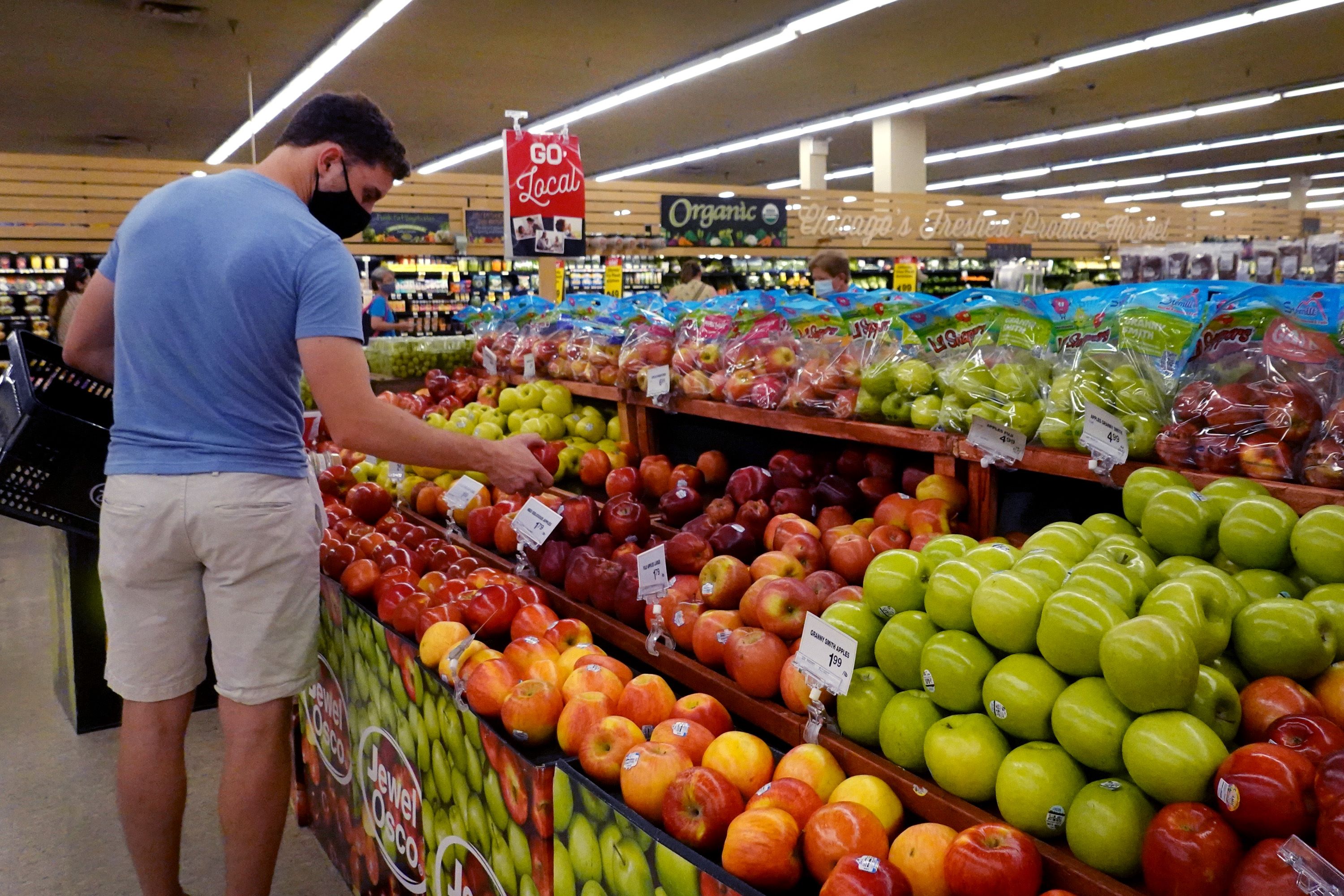US consumer prices surged in June, topping all estimates
Sign up now: Get ST's newsletters delivered to your inbox

The consumer price index jumped 0.9 per cent in June and 5.4 per cent from the same month last year.
PHOTO: AFP
Follow topic:
(BLOOMBERG) - Prices paid by US consumers surged in June by the most since 2008, topping all forecasts and showing higher costs associated with the economy's reopening continue to fuel inflationary pressures.
The consumer price index jumped 0.9 per cent in June and 5.4 per cent from the same month last year, according to Labour Department data released Tuesday. Excluding the volatile food and energy components, the so-called core CPI also rose 0.9 per cent. The core increased 4.5 per cent from June 2020, the largest advance November 1991.
Used vehicles accounted for one third of the gain in the CPI last month, the agency said. The outsize increase in the June CPI was also driven in large part by the pricing rebound in categories associated with a broader reopening of the economy including hotel stays, car rentals, apparel and airfares.
Expectations that those increases will normalise help explain the Federal Reserve's view that inflation is transitory.
With inflation, from the Fed "we are told the story is transitory but the increases are going faster and for longer," John Ryding, chief economic adviser at Brean Capital said on Bloomberg Television. "We just had a monthly increase that was about double what was expected."
The median forecasts in a Bloomberg survey of economists called for a 0.5 per cent gain in the overall CPI from the prior month and a 4.9 per cent year-over-year increase. Treasury yields climbed following the data, while the dollar jumped and S&P 500 futures fell.
The year-over-year figures have shown outsize gains in recent months partly because of so-called base effects - the CPI retreated from March through May of last year during the pandemic lockdowns. While the annual figures are expected to peak, it's not yet clear how much moderation will occur over the coming months.
Feeding through
Household spending on merchandise, fuelled in part by government stimulus, has left businesses scrambling to fill orders while facing shortages of materials and labour. That dynamic is contributing to higher costs, which often feed through to consumer prices.
Meanwhile, the lifting of pandemic restrictions is propelling purchases of services like travel and transportation, another contributor to inflationary pressures.
Prices paid for new and used vehicles rose from a month earlier by the most on record. That said, those categories each make up less than 4 per cent of the overall CPI.
The cost of food away from home jumped 0.7 per cent on a month-over-month basis, the largest gain since 1981.
Fed Chair Jerome Powell has said that recent price increases are the result of transitory reopening effects, though more recently acknowledged the possibility of longer-term inflationary pressures. Sustained constraints in the production pipeline raise the risk of an acceleration in consumer inflation.
"Bottlenecks, hiring difficulties and other constraints could continue to limit how quickly supply can adjust, raising the possibility that inflation could turn out to be higher and more persistent than we expect," Powell said after the June Federal Open Market Committee meeting.
Economists have been watching to see whether price pressures broaden out to categories other than those that are just now rebounding after pandemic-related lockdowns.
Shelter costs, which are seen as a more structural component of the CPI and make up a third of the overall index, rose 0.5 per cent last month, the most since October 2005. The gain was driven by a 7.9 per cent jump in hotel stays.
Wage growth rose steadily through the second quarter, but higher consumer prices are taking a toll. Inflation-adjusted average hourly earnings fell 1.7 per cent in June after slumping 2.9 per cent a month earlier, separate data showed Thursday.
Figures out Tuesday from the National Federation of Independent Business showed 47 per cent of small-business owners, the largest share since 1981, reported higher selling prices in June.
Consumers are anticipating higher prices in the near-term. Median inflation expectations for the coming year increased to series high 4.8 per cent in June, according to the New York Fed's Survey of Consumer Expectations.

